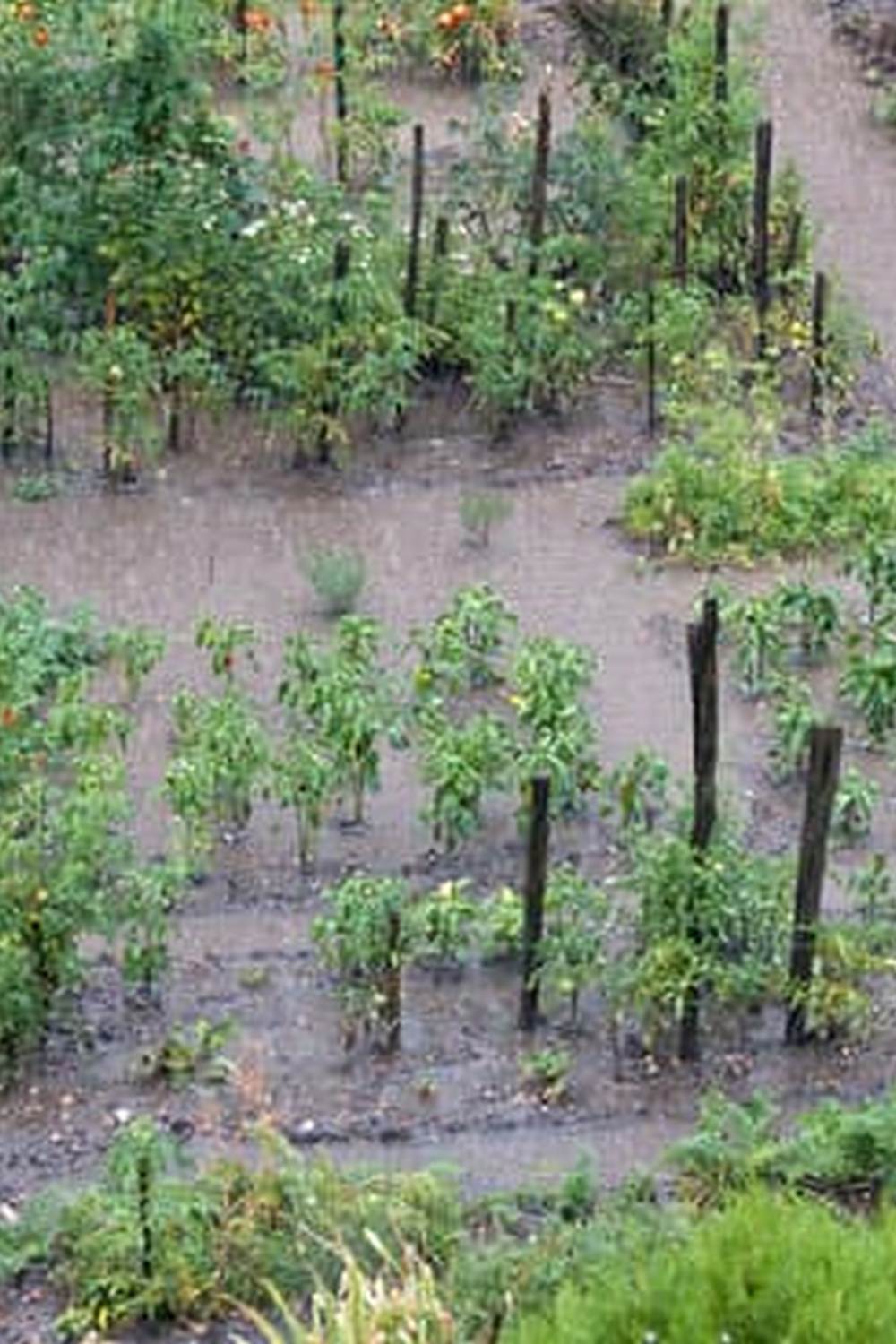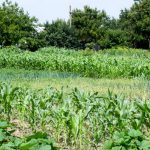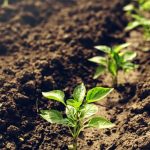Are you looking to start a vegetable garden and wondering what the best soil for vegetable gardening is? The success of your vegetables largely depends on the type of soil in which they are grown.
In this article, we will explore the characteristics of the best soil for vegetable gardening, different types of soil, testing and amending soil for optimal growth, recommended soil mixtures for container gardening, organic vs. inorganic soil amendments, and tips for maintaining healthy soil for long-term success.
The right type of soil is essential for healthy and productive vegetable plants. It provides the necessary nutrients, moisture retention, drainage, and aeration that plants need to thrive. Understanding the importance of soil in vegetable gardening is crucial as it sets the foundation for a successful harvest.
In order to choose the best soil for your vegetable garden, it’s important to understand the characteristics of good soil and how different types of soil can impact plant growth. We will also discuss methods for testing and amending your soil to create optimal growing conditions for your vegetables. Whether you’re planting directly in the ground or using containers, having the right soil mixture is key to growing healthy vegetables.
Characteristics of the Best Soil for Vegetable Gardening
When it comes to vegetable gardening, the importance of having the best soil cannot be overstated. The right soil provides essential nutrients and a good structure for optimal vegetable growth. In this section, we will discuss the characteristics of the best soil for vegetable gardening to help you achieve a successful harvest.
1. Well-Drained: The best soil for vegetable gardening should have good drainage to prevent waterlogging, which can lead to root rot and other issues. Poorly drained soil can also hinder nutrient uptake by plants.
2. Nutrient-Rich: Vegetables require a variety of nutrients to grow and thrive. The best soil for vegetable gardening should be rich in organic matter, such as compost or well-rotted manure, to provide essential nutrients for plant growth.
3. pH Balanced: Different vegetables thrive in different soil pH levels, so it’s important to have a soil pH that is suitable for the types of vegetables you plan to grow. Most vegetables prefer a slightly acidic to neutral pH range.
4. Good Structure: The best soil for vegetable gardening should have a crumbly texture that allows roots to penetrate easily and water and air to circulate freely.
By ensuring that your soil has these characteristics, you can create an ideal environment for your vegetables to flourish and produce a bountiful harvest. Whether you’re growing tomatoes, peppers, carrots, or lettuce, having the best soil for vegetable gardening is essential for success.
Types of Soil for Vegetable Gardening
When it comes to vegetable gardening, the type of soil you have can greatly impact the success of your garden. Understanding the characteristics of different types of soil is crucial for determining which is the best soil for vegetable gardening. In general, there are three main types of soil: sandy, loamy, and clay.
Sandy Soil
Sandy soil is characterized by its large particles and poor water retention. While this type of soil drains well and warms up quickly in the spring, it often lacks essential nutrients for plant growth. To improve sandy soil for vegetable gardening, organic matter such as compost or peat moss can be added to increase its fertility and ability to retain moisture.
Loamy Soil
Loamy soil is considered the best soil for vegetable gardening due to its balanced mixture of sand, silt, and clay. This type of soil has excellent drainage while retaining nutrients for plant growth. Its loose texture makes it easy to work with, allowing for proper root development and aeration.
Clay Soil
Clay soil has tiny particles that hold onto water and nutrients but can become compacted easily, leading to poor drainage and aeration. However, with proper amendments such as organic matter like compost or aged manure, clay soil can be improved for vegetable gardening by enhancing its structure and fertility.
Understanding the strengths and weaknesses of each type of soil is essential for choosing the best option for your vegetable garden. Whether amending existing soil or starting from scratch with a new plot or container garden, recognizing which type of soil will best suit your needs will contribute greatly to a successful harvest. The best soil mixtures often involve a combination of these three basic types in order to create an optimal growing environment for your vegetables.
Testing and Amending Soil for Optimal Vegetable Growth
Soil testing and amending are crucial steps in achieving optimal vegetable growth in your garden. The best soil for vegetable gardening should have the right balance of nutrients, pH levels, and texture to support healthy plant development.
Before planting, it’s essential to test your soil to determine its pH level and nutrient content. You can purchase DIY soil test kits or send samples to a professional lab for analysis. Once you have the results, you can then amend your soil accordingly. Adding compost, organic matter, or specific fertilizers can help adjust nutrient levels and improve soil structure.
In addition to testing and amending the soil, it’s also important to consider the overall texture of the soil. Sandy soil drains quickly but may need more frequent watering and fertilizing. Loamy soil is considered ideal for vegetable gardening as it retains moisture while allowing for good drainage. Clay soil, on the other hand, holds onto water and can become compacted, requiring additional amendments to improve its quality.
Here are some key factors in testing and amending soil for optimal vegetable growth:
- Soil testing can be done using DIY kits or through professional lab analysis
- Amending soil with compost and organic matter can help adjust nutrient levels
- Consider the texture of your soil – sandy, loamy, or clay – when planning amendments
| Key Factors | Details |
|---|---|
| Soil Testing | DIY kits or professional lab analysis |
| Amendments | Compost and organic matter for nutrient adjustment |
| Soil Texture | Sandy, loamy, or clay considerations |
Best Soil Mixtures for Container Vegetable Gardening
When it comes to container vegetable gardening, the right soil mixture is essential for the success of your plants. The best soil for vegetable gardening in containers should provide proper drainage, aeration, and nutrients to support healthy plant growth. One of the key considerations when choosing a soil mixture for container gardening is ensuring that it retains moisture while also allowing excess water to drain away.
A good starting point for creating the best soil mix for container vegetable gardening is combining equal parts of peat moss, perlite, and compost. Peat moss helps with moisture retention, perlite provides aeration and prevents compaction, and compost adds essential nutrients to the soil. This combination creates a well-balanced soil mixture that promotes healthy root development and overall plant growth.
In addition to using a basic soil mix as mentioned above, incorporating organic matter such as well-decomposed leaf mold or aged manure can further enhance the quality of the soil. Organic matter not only improves soil structure but also increases its ability to hold onto nutrients that are crucial for vegetable plants.
It’s important to note that when using organic matter in container gardening, it should be well-aged to avoid any potential issues with excessive heat or nutrient imbalances within the soil.
| Soil Mixture | Ratio |
|---|---|
| Peat Moss | 1 part |
| Perlite | 1 part |
| Compost | 1 part |
By utilizing the recommended soil mixtures and incorporating organic matter into your container vegetable gardening practices, you can create an optimal growing environment for your plants. With proper care and attention to soil health, you can enjoy bountiful harvests from your container garden all season long.
Organic vs Inorganic Soil Amendments for Vegetable Gardening
When it comes to vegetable gardening, one of the most important factors for success is the type of soil you use. Soil provides the essential nutrients and support that plants need to thrive and produce a bountiful harvest. One key decision gardeners must make is whether to use organic or inorganic soil amendments to improve the quality of their soil.
Organic soil amendments are derived from natural sources such as compost, manure, and bone meal. These amendments help improve soil structure, increase microbial activity, and enhance nutrient availability for vegetables. In addition, organic amendments can also improve water retention and drainage, creating a healthy environment for plant roots to grow.
On the other hand, inorganic soil amendments are made from synthetic compounds and minerals. These include substances like perlite, vermiculite, and synthetic fertilizers. While they may not provide the same long-term benefits as organic amendments in terms of enhancing soil fertility and structure, inorganic amendments can offer a quick boost of specific nutrients to plants when needed.
Consider using both organic and inorganic amendments to achieve the best results for your vegetable garden. By combining the benefits of natural materials with the quick-acting properties of synthetic compounds, you can create a balanced soil environment that promotes healthy plant growth. Remember to always follow recommended application rates when using any type of amendment to avoid overloading your soil with nutrients or altering its pH balance too drastically.
- Compost
- Manure
- Bone meal
- Perlite
- Vermiculite
- Synthetic fertilizers
Tips for Maintaining Healthy Soil for Long-Term Vegetable Gardening Success
Maintaining healthy soil is crucial for long-term success in vegetable gardening. Without proper care and maintenance, soil can become depleted of nutrients and lose its ability to support healthy plant growth. Here are some tips for keeping your soil in top condition for the best vegetable gardening results.
Regular Soil Testing
To maintain healthy soil, it’s important to regularly test its pH levels and nutrient content. By understanding the current state of your soil, you can make informed decisions about which amendments and fertilizers are needed to optimize its fertility for vegetable gardening. Consider conducting a soil test at least once a year to ensure that your soil is providing the necessary support for your vegetable plants.
Implement Crop Rotation
Crop rotation is a technique used to prevent the depletion of specific nutrients from the soil. By rotating the location of different vegetable crops each season, you can help maintain soil health and reduce the risk of nutrient deficiencies. Certain vegetables deplete specific nutrients from the soil, so rotating crops can help ensure that different areas of the garden are given a chance to recover and replenish their nutrient levels.
Utilize Organic Matter
Incorporating organic matter into the soil is an effective way to improve its structure and fertility over time. Compost, aged manure, and cover crops are all excellent sources of organic matter that can be added to vegetable gardens to enrich the soil. These materials help improve drainage, water retention, and overall nutrient content in the best soil for vegetable gardening, resulting in healthier plants and higher yields.
Conclusion
In conclusion, the success of your vegetable garden largely depends on choosing the right soil. The best soil for vegetable gardening provides a well-balanced environment with adequate nutrients, good drainage, and proper aeration. Whether you have sandy, loamy, or clay soil, it is essential to test and amend it to ensure optimal growth for your vegetables.
Consider organic soil amendments such as compost and mulch to enrich the soil naturally and sustain long-term health. Alternatively, inorganic amendments like fertilizers can provide a quick boost of nutrients if needed. Additionally, if you are utilizing containers for your vegetable garden, using the right soil mixture is crucial for providing proper support and nutrients for your plants’ development.
Remember that maintaining healthy soil is an ongoing process. Regular testing for pH levels and nutrient content will help you adjust and maintain the optimal conditions for your vegetables. By understanding and implementing these tips, you can ensure that you have chosen the best soil for vegetable gardening and set the stage for a successful harvest season.
Frequently Asked Questions
What Type of Soil Is Best for Vegetable Garden?
The best type of soil for a vegetable garden is loamy soil, which is a combination of sand, silt, and clay. This type of soil provides good drainage, moisture retention, and aeration for vegetable roots to thrive.
What Is the Best Soil Recipe for Vegetables?
The best soil recipe for vegetables involves mixing organic matter like compost or well-rotted manure with the existing soil to improve its fertility and structure. Adding in some perlite or vermiculite can also help with drainage.
What Is the Best Soil for Growing Vegetables in Planters?
The best soil for growing vegetables in planters is a mixture of potting soil and compost. This combination provides the necessary nutrients and good drainage for the vegetables to grow well in the confined space of a planter.

If you’re looking to get into vegetable gardening, or are just looking for some tips on how to make your current garden better, then you’ve come to the right place! My name is Ethel and I have been gardening for years. In this blog, I’m going to share with you some of my best tips on how to create a successful vegetable garden.





